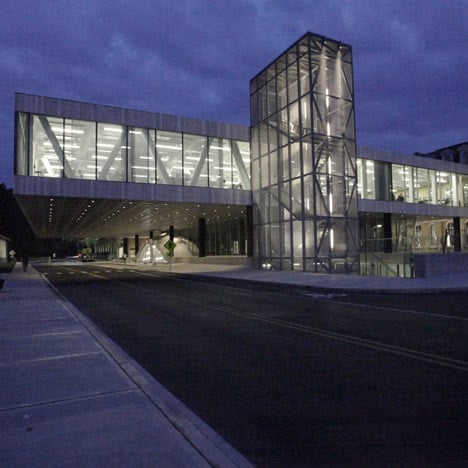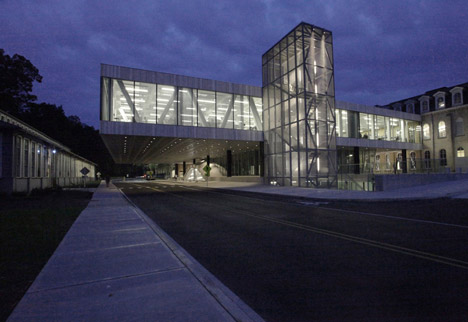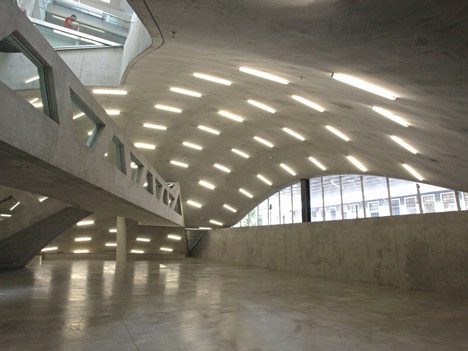
New OMA building opens at Cornell University
Dezeen Wire: architects OMA have announced the opening of Milstein Hall at Cornell University in New York.
The project was led by OMA partner and director Shohei Shigematsu, and Pritzker Prize-winner Rem Koolhaas. It unites the various facilities of the College of Architecture, Art and Planning.
See all of our Dezeen stories on OMA here.


Here is some more information from the architects:
OMA’s Milstein Hall opens at Cornell University
NEW YORK CITY/ITHACA, N.Y., September 16, 2011 | Cornell University’s Milstein Hall – the first new building in over 100 years for the renowned College of Architecture, Art and Planning (AAP) – opened its studios for students in late August with completion coming in October. Led by OMA partner and director Shohei Shigematsu, and Pritzker Prize-winner Rem Koolhaas, the design for the 47,000-square-foot building physically unites the AAP’s long-separated facilities to form a platform for interdisciplinary collaboration.
"Milstein Hall operates on many levels," says AAP dean Kent Kleinman. "It redefines the entry for the northern edge of the campus; it provides a permeable boundary between academic space and the public; it offers extraordinary spatial relationships between internal programmatic elements; and it offers a landscape of studios that fosters a level of interaction between our undergraduate and graduate architecture students that we have never enjoyed before."
Milstein Hall’s large horizontal plate connects the second levels of the AAP’s existing Sibley Hall and Rand Hall to provide 25,000 square feet of studio space with panoramic views of the surrounding environment. Enclosed by floor-to-ceiling glass and a green roof with 41 skylights, this “upper plate” cantilevers almost 50 feet over University Avenue to establish a relationship with the Foundry, a third existing AAP facility. The wide-open expanse of the plate — structurally supported by a hybrid truss system — stimulates interaction and allows flexible use over time.
Shohei Shigematsu comments: "Our ambition for the upper plate was for it to serve as a pedagogical platform for the architecture, art and planning departments – an open condition that could trigger interaction and discussion. The students and faculty are already beginning to use the space to generate unexpected results that go beyond what we had planned.”
Beneath the hovering studio plate, the ground level accommodates major program elements including a 253-seat auditorium, and a dome that encloses a 5,000 square foot circular critique space. The dome serves multiple functions: it supports the raked auditorium seating, it becomes the stairs leading up to the studio plate above, and it is the artificial ground for an array of exterior seating pods fostering public activities.

Back to Dezeenwire »
Back to Dezeen »